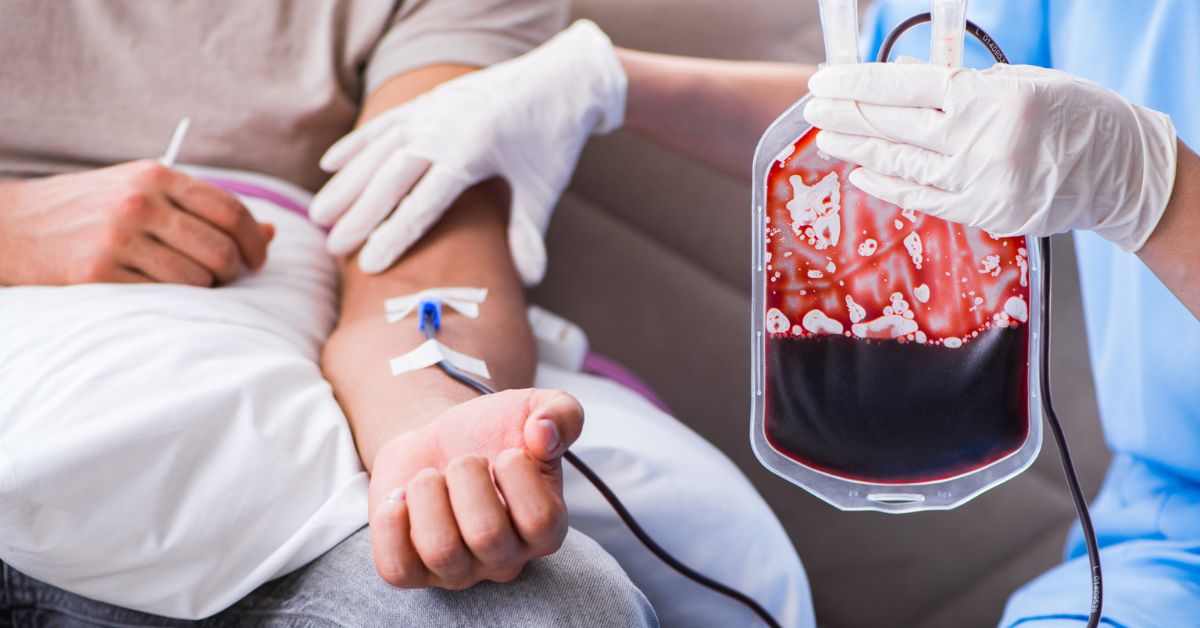Blood transfusions are generally normal operations that are performed large number of times every year in U.S. emergency clinics and all over the planet. A blood transfusion may be vital when a patient has gotten a significant horrible injury bringing about serious blood misfortune. Or on the other hand, a blood transfusion could be expected for specific arranged medical procedures that commonly bring about significant blood misfortune. Arranged tasks that might require a blood transfusion incorporate the accompanying:
C-area
Open heart medical procedure
Joint substitution
Muscular health
Also, numerous others
The explanation a blood transfusion could be essential after blood misfortune is a direct result of the job blood plays in providing oxygen to the body. The more modest how much blood in a patient’s body, the less oxygen comes to that understanding’s imperative organs and tissues. Without enough oxygen, significant organs, for example, the mind and heart will ultimately close down.
Despite the fact that blood transfusions are somewhat protected operations that have a high pace of progress with practically no complexities, numerous patients select elective operations. Bloodless medical procedure is one such other option. The field of bloodless medication is really various strategies and methodology intended to build how much oxygen in the blood and cutoff blood misfortune during medical procedure.
A few patients pick the bloodless course over a conventional blood transfusion for strict reasons. Others choose to have a bloodless medical procedure due to the dangers that are implied with a blood transfusion. In spite of the fact that medical clinics and medical services frameworks do everything possible to make blood transfusions as protected as could be expected, there is no assurance that a blood transfusion will be a 100 percent safe methodology.
The following are 10 dangers related with blood transfusions that each tolerant ought to know about:
1.) Infections and irresistible sicknesses –
Despite the fact that blood gift associations and blood banks have severe screening and testing methods, there have been cases where patients have gotten tainted blood from a transfusion. Infections and illnesses that can be sent through a blood transfusion incorporate HIV, Hepatitis, West Nile Infection, and CJD (the human type of “frantic cow sickness”).
2.) Hypersensitive response –
At the point when blood is given, it is given as entire blood. The entire blood is then isolated into the different blood parts that may be required in a transfusion (red and white cells, platelets, and so on.). Once in a while the contributor blood can contain different particles which could set off an unfavorably susceptible response in the beneficiary. Hypersensitive responses during a transfusion can be gentle to extreme and require the transfusion to be halted at the primary sign.
3.) Lung injury –
At times, patients getting a blood transfusion can encounter lung harm. This can be brought about by a safe response which goes after the beneficiary’s lungs. Lung wounds present a serious blood transfusion risk – almost 25% of these wounds demonstrate deadly.
4.) Unite versus-have illness (GVHD) –
Unite versus-have sickness (GVHD) is a difficult condition where the new white blood cells assault the beneficiary’s body. This condition regularly just influences patients with frail invulnerable frameworks and is frequently deadly.
5.) Intense insusceptible hemolytic response –
An intense insusceptible hemolytic response is an interesting, yet difficult condition. This happens when the beneficiary’s body goes after the new red blood cells. This produces substances in the blood that can hurt the kidneys. The transfusion ought to be halted quickly at the earliest hint of an intense insusceptible hemolytic response. The side effects incorporate dull pee, fever, chills, and back or chest torment.
6.) Postponed hemolytic response –
A postponed insusceptible hemolytic response is like the intense condition; nonetheless, the deferred response is a lot more slow. This sort of response is very hazardous in light of the fact that it can slip through the cracks while the patient’s red blood count drops.
7.) Fever –
At the point when someone else’s blood enters the beneficiary’s body, a fever is an ordinary and normal safe reaction to the presence of the unfamiliar white blood cells. Most fevers are gentle and don’t upset the transfusion.
8.) A lot of iron –
At times, where a patient should get a lot of blood through different transfusions, an excess of iron can develop in the blood. An “iron over-burden, for example, this can harm the liver and other indispensable organs.
9.) Liquid over-burden –
Patients who should get numerous transfusions are in danger for liquid over-burden. Basically the presence of a lot of liquid in the blood, liquid over-burden can bring about a decrease in how much oxygen in the blood. Cardiovascular disappointment can result in the event that the overabundance liquid isn’t quickly depleted.
10.) Human mistake/wrong blood type –
Blood transfusions are a clinical activity and, likewise with any operation, there is dependably the gamble for human blunder. On the off chance that a patient unintentionally gets some unacceptable blood type during a transfusion, they could experience gentle to extreme hypersensitive responses and other serious difficulties.
Norman A. Smyke Jr, MD, is a board ensured expert in Anesthesiology and is the head of the Middle for Blood Preservation at Award. Dr. Smyke administers the primary bloodless medication program in Columbus, Ohio and remote regions to give officially perceived blood the executives administrations, including bloodless medical procedure.

